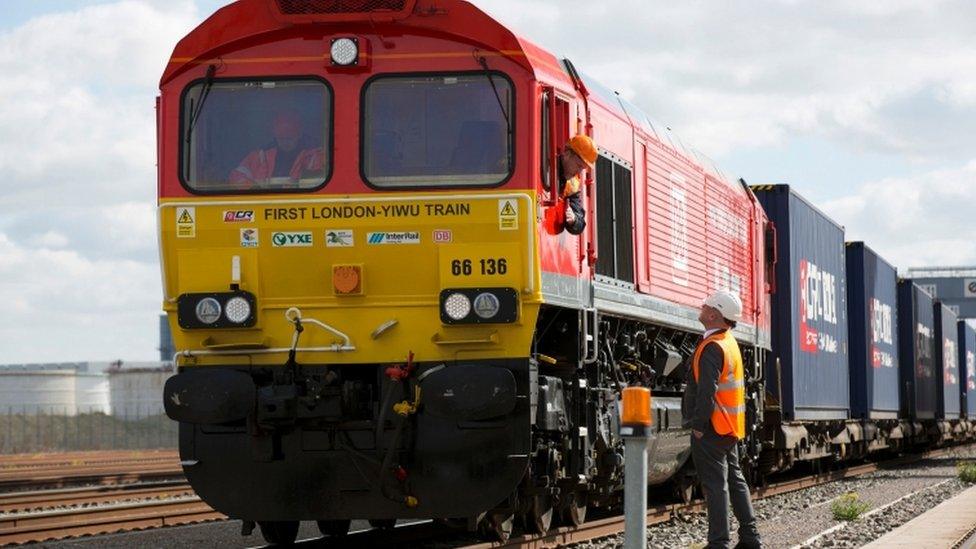- By Della tj
- October 24, 2025
- Rail Freight, Shipping
Fast rail freight from Shenzhen to Canada offers a cost-efficient and reliable alternative to air or sea freight for businesses seeking faster delivery times and consistent logistics performance. With rail transport bridging the gap between speed and cost-effectiveness, this mode is increasingly popular for shipments that demand precision and efficiency.
Why Choose Fast Rail Freight from Shenzhen to Canada?
Speed and reliability are two key reasons companies are shifting toward rail freight. Although air freight is faster, its high cost can quickly cut into profit margins. Conversely, sea freight is cheaper but significantly slower.
Rail freight offers a balance between cost, time, and security, providing a dependable logistics solution that suits both commercial and industrial shipments. Additionally, rail routes connecting Shenzhen with Canadian ports via Eurasian and North American intermodal networks have made transit times shorter and more predictable.
Advantages include:
- Shorter transit time compared to sea freight.
- Stable pricing with minimal seasonal fluctuations.
- High cargo capacity for bulk shipments.
- Lower carbon emissions than air freight.
What Makes Rail Freight an Efficient Option?
Rail freight leverages advanced logistics technology to streamline delivery schedules, customs clearance, and cargo tracking. With integrated tracking systems, businesses can monitor their shipments in real-time. Moreover, rail networks are less affected by weather disruptions than sea or air routes.
| Mode | Average Transit Time (Days) | Cost (USD/CBM) | Reliability | Best For |
|---|---|---|---|---|
| Rail Freight | 22–28 | 160–200 | High | General cargo, machinery, electronics |
| Sea Freight | 35–45 | 100–130 | Medium | Bulk commodities |
| Air Freight | 5–8 | 400–600 | Very High | Urgent and small shipments |
As a result, rail freight from Shenzhen to Canada ensures not just timely arrivals but also cost predictability — a critical factor for importers managing multiple supply chains.
How Does the Rail Route from Shenzhen to Canada Work?
The rail freight journey typically starts at Shenzhen’s inland terminal, connecting to major rail corridors through Chongqing, Xi’an, or Zhengzhou, and then continues across Kazakhstan, Russia, and Belarus before arriving at European terminals. From there, the containers are transferred to sea vessels bound for Vancouver or Toronto.
This multimodal transport solution merges the best of both rail and sea networks — optimizing cost and transit time without compromising cargo integrity.
Main Route Overview:
- Origin: Shenzhen, China
- Transit: Kazakhstan → Russia → Europe → North America
- Destination: Toronto or Vancouver, Canada
- Estimated Duration: 22–28 days
This hybrid route maintains reliability and avoids congestion common in air and ocean ports.
What Are the Typical Shipping Costs and Timeframes?
Shipping costs vary according to volume, weight, and service level. Below is a pricing guide for fast rail freight from Shenzhen to Canada:
| Shipment Type | Weight/Volume | Estimated Cost (USD) | Transit Time (Days) |
|---|---|---|---|
| 1 CBM Electronics | 200 kg | $180–$220 | 22–25 |
| 10 CBM Furniture | 1,800 kg | $1,700–$2,100 | 25–28 |
| 20 CBM Industrial Tools | 3,600 kg | $3,000–$3,600 | 26–30 |
Additionally, door-to-door delivery options provide flexibility for importers who prefer consolidated customs clearance and inland delivery in Canada.
Customs Clearance Process for Rail Freight Shipments
Smooth customs clearance is essential for maintaining delivery schedules. Rail freight shipments from Shenzhen to Canada typically require the following documents:
| Document Type | Purpose |
|---|---|
| Bill of Lading (B/L) | Confirms shipment ownership |
| Packing List | Details product weight and volume |
| Commercial Invoice | Customs value declaration |
| Certificate of Origin | Verifies product source |
| Import License (if applicable) | For restricted goods |
Moreover, partnering with a licensed freight forwarder simplifies this process by handling all documentation, ensuring compliance with both Chinese and Canadian regulations.

Real Case Studies of Rail Freight from Shenzhen to Canada
Case 1: Electronics Export to Vancouver
- Route: Shenzhen → Chongqing → Moscow → Rotterdam → Vancouver
- Cargo: 6 CBM (laptops and computer components)
- Cost: $1,150
- Duration: 23 days
- Outcome: Timely delivery, reduced freight cost by 40% compared to air freight.
Case 2: Furniture Shipment to Toronto
- Route: Shenzhen → Xi’an → Minsk → Hamburg → Toronto
- Cargo: 15 CBM of wooden furniture
- Cost: $2,950
- Duration: 26 days
- Outcome: Client saved 25% on logistics expenses with door-to-door service.
What Are the Advantages of Fast Rail Freight?
Choosing fast rail freight from Shenzhen to Canada offers numerous operational benefits that improve your overall logistics strategy.
Advantages Summary:
- Reduced transit time compared to sea shipping.
- Lower costs than air freight.
- Eco-friendly option with lower CO₂ emissions.
- Enhanced supply chain visibility with real-time tracking.
- Suitable for small to medium-sized businesses and bulk cargo.
Moreover, rail freight is less impacted by port congestion or flight cancellations, ensuring stability in unpredictable global trade conditions.

How to Choose the Right Freight Forwarder for Your Shipment
Selecting a trusted freight forwarder is critical for successful cross-border logistics. When choosing a service provider, evaluate the following criteria:
| Criteria | Why It Matters |
|---|---|
| Experience in Rail Freight | Ensures efficient route planning |
| Customs Brokerage Capability | Simplifies clearance at both ends |
| Real-Time Tracking | Enhances shipment visibility |
| Insurance & Risk Management | Protects valuable cargo |
| Multimodal Service Options | Offers flexibility in delivery |
Without a doubt, a professional logistics partner ensures compliance, transparency, and cost efficiency throughout the shipping process.
Conclusion
In summary, fast rail freight from Shenzhen to Canada delivers a strategic advantage to businesses seeking faster, eco-friendly, and cost-effective logistics. By integrating modern rail networks with flexible delivery options, it bridges the gap between speed and affordability.
Choosing the right freight forwarder ensures seamless customs clearance and optimal transit times. Therefore, companies that adopt rail freight solutions gain a competitive edge in global trade efficiency.
- Consult TJ China Freight Forwarding for the lowest quote. They will provide you with reliable, cost-effective service.
FAQ:
Q1.What is the average delivery time for rail freight from Shenzhen to Canada?
Transit time typically ranges from 22 to 28 days, depending on the route and customs processing efficiency.
Q2.Can I ship partial containers via rail freight?
Yes, less-than-container load (LCL) options are available for smaller shipments, offering cost savings and reliable scheduling.
Q3.What cargo types are best suited for rail freight to Canada?
Electronics, furniture, industrial parts, and general consumer goods are ideal for rail freight due to stable conditions.
Q4.How are customs duties calculated for rail freight shipments?
Customs duties depend on cargo value, classification, and applicable import tariffs in both China and Canada.
Q5.Is rail freight more eco-friendly than air freight?
Yes, rail freight emits significantly less CO₂ than air transport, making it a sustainable logistics solution.




